Datasheet
Year, pagecount:2015, 8 page(s)
Language:English
Downloads:5
Uploaded:November 07, 2017
Size:1 MB
Institution:
-
Comments:
Attachment:-
Download in PDF:Please log in!
Comments
No comments yet. You can be the first!Most popular documents in this category
Content extract
Source: http://www.doksinet DICTIONARY OF SCOTTISH ARCHITECTS GAVIN McCONNELL GAVIN McCONNELL (1923-2014) AND THE EDUCATION DIVISION AT FIFE COUNTY COUNCIL ARCHITECTS DEPARTMENT IN THE POST-WAR PERIOD In the aftermath of the Second World War, central government and local authorities were engaged in a huge drive to provide not only new housing, but also more schools. There were numerous reasons for this: the Education Act of 1945 (1944 in England) made free senior secondary education available to all pupils qualified to take it. In 1947 the school leaving age was raised from 14 to 15. The ‘baby boom’ after the war began to have an effect on the numbers of infants entering school, while the existing stock of schools was becoming outdated and unsuitable for modern teaching needs. School building was the fullest expression of the movement for a social architecture in Britain which had gathered pace in the 1930s and found its outlet in the service of the post-war welfare state. This
huge surge of school building activity is nowhere more in evidence than in the County of Fife. In 1947 Robert Sorley Lawrie was appointed County Architect in Fife, the first in this position after the war. Lawrie was an Aberdonian by birth and had worked in the City Architect’s Department in Dublin before moving back to Scotland to take up his new position in Fife. The Department was divided into three sections: Housing, Education and Maintenance. Because of the increased demand for housing and schools, after his arrival Lawrie started building up the Department by appointing a number of young architects, including Gavin Haveron McConnell, who arrived to work in the Education section in 1953. McConnell was brought up in Paisley. He was articled to James Watson Reid in Glasgow and attended classes at Paisley Technical College but his training was interrupted by four years of war service with the Royal Engineers. After the war he enrolled part-time at Glasgow School of Art and was
elected ARIBA in 1953. (Fig1) Fig. 1: Gavin McConnnell in 2012 Crown copyright wwwhistoricscotlandimagesgovuk 1 Source: http://www.doksinet During the war years there had been almost no building activity. Materials were in very short supply, particularly timber, and this resulted in experiments with new materials and new designs. The need to keep costs down was an overriding factor with all new school building work. The budgets were strictly controlled by the Scottish Education Department. When McConnell arrived in Fife, there were about half a dozen architects in the Education section. They were divided into groups under the overall leadership of Eric Draper who was largely responsible for the practical aspects of appointing young architects and the way in which it was structured. Each group within the Department had a leader. Initially McConnell’s group leader was Frank Sproson who left in 1954 to enter into private practice. A second group included James Beresford, Peter
Fisher who left after a short time to go into private practice in St Andrews, and Bessie McDowall who had arrived about the same time as McConnell from a post in the County Architect’s office in Dumfries. The way in which the Fife County Architect’s Department was run was unusual if not unique. In the first place the Department relied largely on direct labour, with Fife’s own works department carrying out everything from the smallest job like replacing a light-bulb to undertaking all the building work for the new schools. The second unusual factor was that the Department was run democratically, the young architects being allowed much independence once they had proved themselves. Because the architects worked independently, in some cases it is possible to identify specific responsibilities and specific styles. McConnell’s first job on arrival was to design Pitcorthie Primary School (1953–4) in Dunfermline. (Fig 2)The school is roughly T-plan, using a combination of plain
rendered walls and generous fenestration. Like much other work of the Department of this date, it has echoes of the architecture of the recent Festival of Britain (1951). Fig. 2: Pitcorthie Primary School Crown copyright wwwhistoricscotlandimagesgovuk 2 Source: http://www.doksinet McConnell’s second large job was a major refurbishment and additions to Dunfermline High School. He was responsible for two phases of additions in 1957 and 1978. The norm within the Department was that once an architect was allocated a school, any further work required to that building would be his or her responsibility. Within a few years of McConnell’s arrival, the Architect’s Department in Fife had doubled in size. Bill Pullar joined McConnell’s group, as did Valentino Morrocco, brother of the artist Alberto Morrocco, and who was to become a lifelong friend of McConnell. Jack Cowieson also arrived in the second intake along with Dennis Forder, Bill McAra, Donald Beaton and a number of others.
No architect in the Department liked repeating a design but when quick results were required, designs had to be adapted and reused. John Halford was the project architect for the Dunnikier Way campus of Kirkcaldy High School (1952–8), which consists of six large three-storey ‘pavilion’ blocks projecting from a spine building. (Fig. 3) The same design was used at Glenwood High in Glenrothes (1959–61), with the addition of a long low block across the front; at Woodmill High School in Dunfermline; and at St Andrew’s RC School in Sinclairtown. All date from the late 1950s. Fig. 3: Kirkcaldy High School Dunnikier Way Crown Copyright: RCAHMS Licensor wwwrcahmsgovuk Glenwood and St Andrew’s were part of the five-year building programme which was submitted by Fife to the Scottish Education Department in 1959. Estimated costs 3 Source: http://www.doksinet ranged from £100,000 for a new Burntisland Secondary (apparently never built) to £400,000 for Glenwood. Auchterderran
High School (now Auchterderran Resource Centre) was another building in the plan. (Fig 4) Fig. 4: Former Auchterderran High School Crown copyright wwwhistoricscotlandimagesgovuk It is a simple curtain-walled block of three floors at the front, raised on pilotis, thus providing sheltered outside space and with a lower block at the rear. Certain elements at Auchterderran, and in many other buildings designed by the Department during this period, are clearly derived from contemporary work on the Continent, in particular that of Le Corbusier. However, it would be wrong to assume this was the only source of inspiration. Some of the Fife designs also have parallels in school buildings in England; but while CLASP, a prefabricated building system, was embraced in England and elsewhere in Scotland, the Department in Fife never used this or any other form of system building. Balwearie High School was McConnell’s third large project. (Fig 5) 4 Source: http://www.doksinet Fig. 5:
Balwearie High School Crown copyright wwwhistoricscotlandimagesgovuk The first part was designed and built in 1960. After it was raised to High School status, an extensive addition was made in 1975. The building is positioned on a flat area of land to the south of Kirkcaldy; the extension was built on sloping ground. Like so many architects, McConnell was aware of contemporary developments through the architectural press. A number of Le Corbusier’s ideas were incorporated into this design as they are at Inverkeithing High, also designed by McConnell and his colleagues in the late 1960s. In his writings, Le Corbusier had laid down five important elements in a design: pilotis elevating the mass off the ground; the free plan, achieved through the separation of the load-bearing columns from the walls subdividing the space; the free façade, the corollary of the free plan in the vertical plane; the long horizontal sliding window; and finally the roof garden, restoring, supposedly, the
area of ground covered by the building. Apart from long sliding windows, Balwearie fits this prescription. It is raised on pilotis It uses a steel frame and concrete floors with curtain walls, a high percentage of which are glazed. The entrance hall is completely glazed and pierces the concrete mass. The concrete strips on the façade indicate the positions of staircases. The building has distinct geometric forms and incorporates an oval classroom on the roof, resembling the bridge on an ocean liner. Similarly an echo of a ship can be seen at Glenrothes High (1966–7) which has an impressive bowed assembly hall wing and a central glazed raised drum. Le Corbusier admired the manufacture and appearance of ships, particularly as they were mass produced by industry in an efficient and rational way. 5 Source: http://www.doksinet The Kilrymount Road Building (1963–7) of Madras College in St Andrews, designed by Ian Stewart who had joined the Department in the 1950s, shows considerable
originality. (Fig 6) The classroom block is a simple wide V-shape block but at the rear the dining room and assembly block to the north has a striking series of pagoda roofs. The elevation overlooking the playing fields is largely glazed but divided by piers with glazed tiles. The assembly hall has a complex folded roof structure which is also apparent in the interior over the stage area. Fig. 6: Madras College, Kilrymont Road Building Crown copyright wwwhistoricscotlandimagesgovuk McConnell’s largest school project was Inverkeithing High School (1968–72). (Figs 7a and 7b). The main elements are the large rectangular four-storey classroom block, the lower administration and technical blocks to south-east and south-west, and two large circular pavilions for science and homecrafts. The main finishes used are drydash render and ribbed concrete blockwork McConnell himself acknowledges two Corbusian elements: the pilotis which give open circulation under part of the building, and the
accessible roof space. Inverkeithing has some elements in common with Balwearie but also indicates a distinct change of direction. The large circular science and homecrafts departments with fins all round show a change to a more sculptural approach which was emerging in other parts of Scotland, for example at Gillespie Kidd & Coia’s St Peter’s Seminary, Cardross. Another change in the planning was precipitated by a change in the school curriculum which required social activity along with serious study. This requirement is fulfilled by the central courtyard, circulation between the different sections and informal seating areas. 6 Source: http://www.doksinet Fig. 7a: Inverkeithing High School Crown Copyright: RCAHMS Licensor wwwrcahmsgovuk Fig. 7b: Inverkeithing High School Crown Copyright: RCAHMS Licensor wwwrcahmsgovuk 7 Source: http://www.doksinet By the time of McConnell’s retirement in 1982 the Education section no longer existed. After regionalisation in 1975
the different parts of the Department were rolled into one. McConnell’s jobs under the new regime included a shopping centre and car park in Dunfermline and a health centre in Leven. But by the time central government introduced private finance initiative for constructing local and regional authority buildings, a noteworthy phase in Scotland’s post-war architecture had come to an end. The Dictionary of Scottish Architects is available online for anyone interested in Scotland’s built environment and the architects who created it. For more information you can visit www.scottisharchitectsorguk or contact us by email at Dictionary of Scottish Architects@scotland.gsigovuk or telephone 0131 668 8701 A short film on the architect’s work at Balwearie near Kirkcaldy can be found at: https://vimeo.com/123359419 8
huge surge of school building activity is nowhere more in evidence than in the County of Fife. In 1947 Robert Sorley Lawrie was appointed County Architect in Fife, the first in this position after the war. Lawrie was an Aberdonian by birth and had worked in the City Architect’s Department in Dublin before moving back to Scotland to take up his new position in Fife. The Department was divided into three sections: Housing, Education and Maintenance. Because of the increased demand for housing and schools, after his arrival Lawrie started building up the Department by appointing a number of young architects, including Gavin Haveron McConnell, who arrived to work in the Education section in 1953. McConnell was brought up in Paisley. He was articled to James Watson Reid in Glasgow and attended classes at Paisley Technical College but his training was interrupted by four years of war service with the Royal Engineers. After the war he enrolled part-time at Glasgow School of Art and was
elected ARIBA in 1953. (Fig1) Fig. 1: Gavin McConnnell in 2012 Crown copyright wwwhistoricscotlandimagesgovuk 1 Source: http://www.doksinet During the war years there had been almost no building activity. Materials were in very short supply, particularly timber, and this resulted in experiments with new materials and new designs. The need to keep costs down was an overriding factor with all new school building work. The budgets were strictly controlled by the Scottish Education Department. When McConnell arrived in Fife, there were about half a dozen architects in the Education section. They were divided into groups under the overall leadership of Eric Draper who was largely responsible for the practical aspects of appointing young architects and the way in which it was structured. Each group within the Department had a leader. Initially McConnell’s group leader was Frank Sproson who left in 1954 to enter into private practice. A second group included James Beresford, Peter
Fisher who left after a short time to go into private practice in St Andrews, and Bessie McDowall who had arrived about the same time as McConnell from a post in the County Architect’s office in Dumfries. The way in which the Fife County Architect’s Department was run was unusual if not unique. In the first place the Department relied largely on direct labour, with Fife’s own works department carrying out everything from the smallest job like replacing a light-bulb to undertaking all the building work for the new schools. The second unusual factor was that the Department was run democratically, the young architects being allowed much independence once they had proved themselves. Because the architects worked independently, in some cases it is possible to identify specific responsibilities and specific styles. McConnell’s first job on arrival was to design Pitcorthie Primary School (1953–4) in Dunfermline. (Fig 2)The school is roughly T-plan, using a combination of plain
rendered walls and generous fenestration. Like much other work of the Department of this date, it has echoes of the architecture of the recent Festival of Britain (1951). Fig. 2: Pitcorthie Primary School Crown copyright wwwhistoricscotlandimagesgovuk 2 Source: http://www.doksinet McConnell’s second large job was a major refurbishment and additions to Dunfermline High School. He was responsible for two phases of additions in 1957 and 1978. The norm within the Department was that once an architect was allocated a school, any further work required to that building would be his or her responsibility. Within a few years of McConnell’s arrival, the Architect’s Department in Fife had doubled in size. Bill Pullar joined McConnell’s group, as did Valentino Morrocco, brother of the artist Alberto Morrocco, and who was to become a lifelong friend of McConnell. Jack Cowieson also arrived in the second intake along with Dennis Forder, Bill McAra, Donald Beaton and a number of others.
No architect in the Department liked repeating a design but when quick results were required, designs had to be adapted and reused. John Halford was the project architect for the Dunnikier Way campus of Kirkcaldy High School (1952–8), which consists of six large three-storey ‘pavilion’ blocks projecting from a spine building. (Fig. 3) The same design was used at Glenwood High in Glenrothes (1959–61), with the addition of a long low block across the front; at Woodmill High School in Dunfermline; and at St Andrew’s RC School in Sinclairtown. All date from the late 1950s. Fig. 3: Kirkcaldy High School Dunnikier Way Crown Copyright: RCAHMS Licensor wwwrcahmsgovuk Glenwood and St Andrew’s were part of the five-year building programme which was submitted by Fife to the Scottish Education Department in 1959. Estimated costs 3 Source: http://www.doksinet ranged from £100,000 for a new Burntisland Secondary (apparently never built) to £400,000 for Glenwood. Auchterderran
High School (now Auchterderran Resource Centre) was another building in the plan. (Fig 4) Fig. 4: Former Auchterderran High School Crown copyright wwwhistoricscotlandimagesgovuk It is a simple curtain-walled block of three floors at the front, raised on pilotis, thus providing sheltered outside space and with a lower block at the rear. Certain elements at Auchterderran, and in many other buildings designed by the Department during this period, are clearly derived from contemporary work on the Continent, in particular that of Le Corbusier. However, it would be wrong to assume this was the only source of inspiration. Some of the Fife designs also have parallels in school buildings in England; but while CLASP, a prefabricated building system, was embraced in England and elsewhere in Scotland, the Department in Fife never used this or any other form of system building. Balwearie High School was McConnell’s third large project. (Fig 5) 4 Source: http://www.doksinet Fig. 5:
Balwearie High School Crown copyright wwwhistoricscotlandimagesgovuk The first part was designed and built in 1960. After it was raised to High School status, an extensive addition was made in 1975. The building is positioned on a flat area of land to the south of Kirkcaldy; the extension was built on sloping ground. Like so many architects, McConnell was aware of contemporary developments through the architectural press. A number of Le Corbusier’s ideas were incorporated into this design as they are at Inverkeithing High, also designed by McConnell and his colleagues in the late 1960s. In his writings, Le Corbusier had laid down five important elements in a design: pilotis elevating the mass off the ground; the free plan, achieved through the separation of the load-bearing columns from the walls subdividing the space; the free façade, the corollary of the free plan in the vertical plane; the long horizontal sliding window; and finally the roof garden, restoring, supposedly, the
area of ground covered by the building. Apart from long sliding windows, Balwearie fits this prescription. It is raised on pilotis It uses a steel frame and concrete floors with curtain walls, a high percentage of which are glazed. The entrance hall is completely glazed and pierces the concrete mass. The concrete strips on the façade indicate the positions of staircases. The building has distinct geometric forms and incorporates an oval classroom on the roof, resembling the bridge on an ocean liner. Similarly an echo of a ship can be seen at Glenrothes High (1966–7) which has an impressive bowed assembly hall wing and a central glazed raised drum. Le Corbusier admired the manufacture and appearance of ships, particularly as they were mass produced by industry in an efficient and rational way. 5 Source: http://www.doksinet The Kilrymount Road Building (1963–7) of Madras College in St Andrews, designed by Ian Stewart who had joined the Department in the 1950s, shows considerable
originality. (Fig 6) The classroom block is a simple wide V-shape block but at the rear the dining room and assembly block to the north has a striking series of pagoda roofs. The elevation overlooking the playing fields is largely glazed but divided by piers with glazed tiles. The assembly hall has a complex folded roof structure which is also apparent in the interior over the stage area. Fig. 6: Madras College, Kilrymont Road Building Crown copyright wwwhistoricscotlandimagesgovuk McConnell’s largest school project was Inverkeithing High School (1968–72). (Figs 7a and 7b). The main elements are the large rectangular four-storey classroom block, the lower administration and technical blocks to south-east and south-west, and two large circular pavilions for science and homecrafts. The main finishes used are drydash render and ribbed concrete blockwork McConnell himself acknowledges two Corbusian elements: the pilotis which give open circulation under part of the building, and the
accessible roof space. Inverkeithing has some elements in common with Balwearie but also indicates a distinct change of direction. The large circular science and homecrafts departments with fins all round show a change to a more sculptural approach which was emerging in other parts of Scotland, for example at Gillespie Kidd & Coia’s St Peter’s Seminary, Cardross. Another change in the planning was precipitated by a change in the school curriculum which required social activity along with serious study. This requirement is fulfilled by the central courtyard, circulation between the different sections and informal seating areas. 6 Source: http://www.doksinet Fig. 7a: Inverkeithing High School Crown Copyright: RCAHMS Licensor wwwrcahmsgovuk Fig. 7b: Inverkeithing High School Crown Copyright: RCAHMS Licensor wwwrcahmsgovuk 7 Source: http://www.doksinet By the time of McConnell’s retirement in 1982 the Education section no longer existed. After regionalisation in 1975
the different parts of the Department were rolled into one. McConnell’s jobs under the new regime included a shopping centre and car park in Dunfermline and a health centre in Leven. But by the time central government introduced private finance initiative for constructing local and regional authority buildings, a noteworthy phase in Scotland’s post-war architecture had come to an end. The Dictionary of Scottish Architects is available online for anyone interested in Scotland’s built environment and the architects who created it. For more information you can visit www.scottisharchitectsorguk or contact us by email at Dictionary of Scottish Architects@scotland.gsigovuk or telephone 0131 668 8701 A short film on the architect’s work at Balwearie near Kirkcaldy can be found at: https://vimeo.com/123359419 8
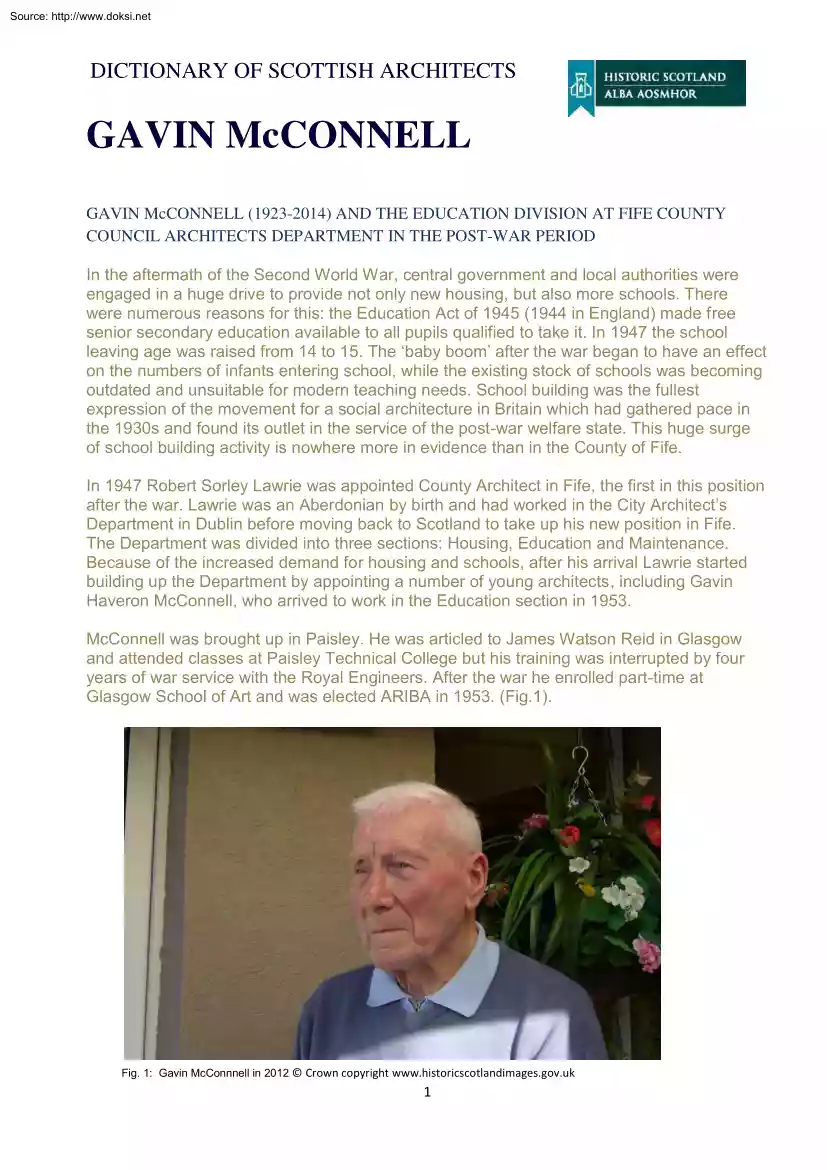
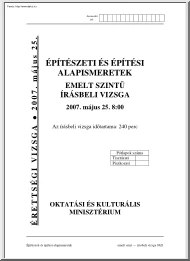
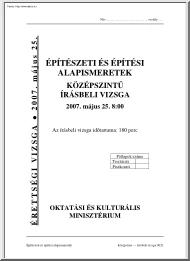
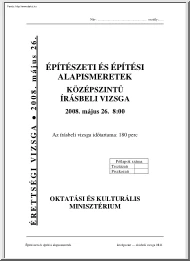
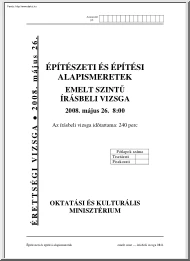
 Just like you draw up a plan when you’re going to war, building a house, or even going on vacation, you need to draw up a plan for your business. This tutorial will help you to clearly see where you are and make it possible to understand where you’re going.
Just like you draw up a plan when you’re going to war, building a house, or even going on vacation, you need to draw up a plan for your business. This tutorial will help you to clearly see where you are and make it possible to understand where you’re going.